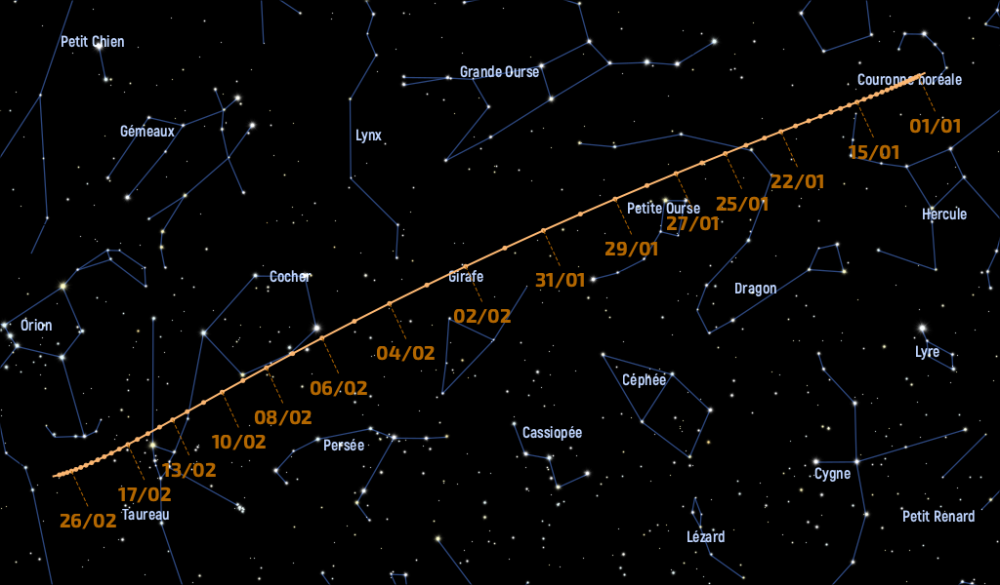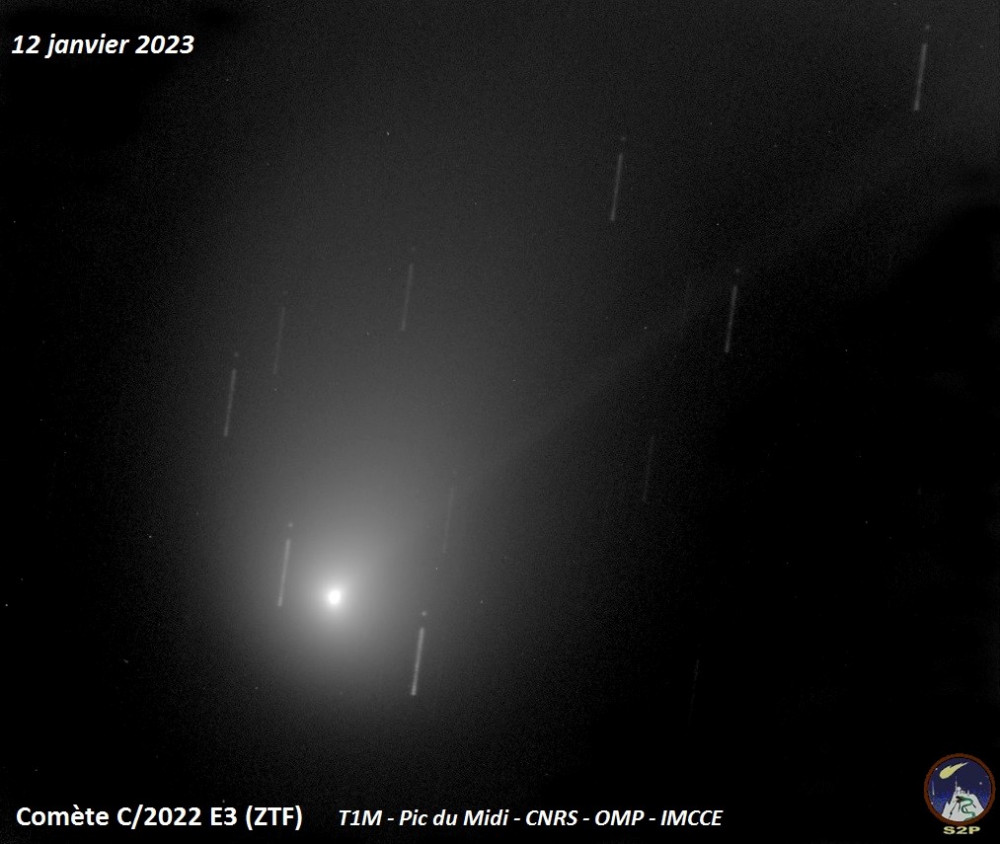Observing comet C/2022 E3 (ZTF)
Comet C/2022 E3 (ZTF) was discovered on March 2, 2022 by the Zwicky Transient Facility (ZTF) in the USA.
On January 12, 2023, the comet passed at the perihelion of its orbit (i.e. at the point of its orbit closest to the Sun), at 1.13 au from the Sun, knowing that the distance Earth-Sun is 1 au. It will pass close to the Earth on February 1, 2023 at a distance of 0.28 au.
Around mid-January, the comet is close to magnitude 7 and can be seen at the end of the night with binoculars between the constellations of Bouvier and Hercules. The comet should gain in brightness to become visible to the naked eye in early February in the constellation of the Giraffe, not far from the North Star.
Comet C/2022 E3 (ZTF) will remain visible throughout the month as it passes through the various constellations of the winter sky.

The comet C/2022 E3 (ZTF) already has a nice tail of dust pushed by the solar wind.

To observe the comet in the best conditions, it is necessary to place itself at a place where there is little light pollution and to avoid as much as possible the moments when the Moon is present in the sky.